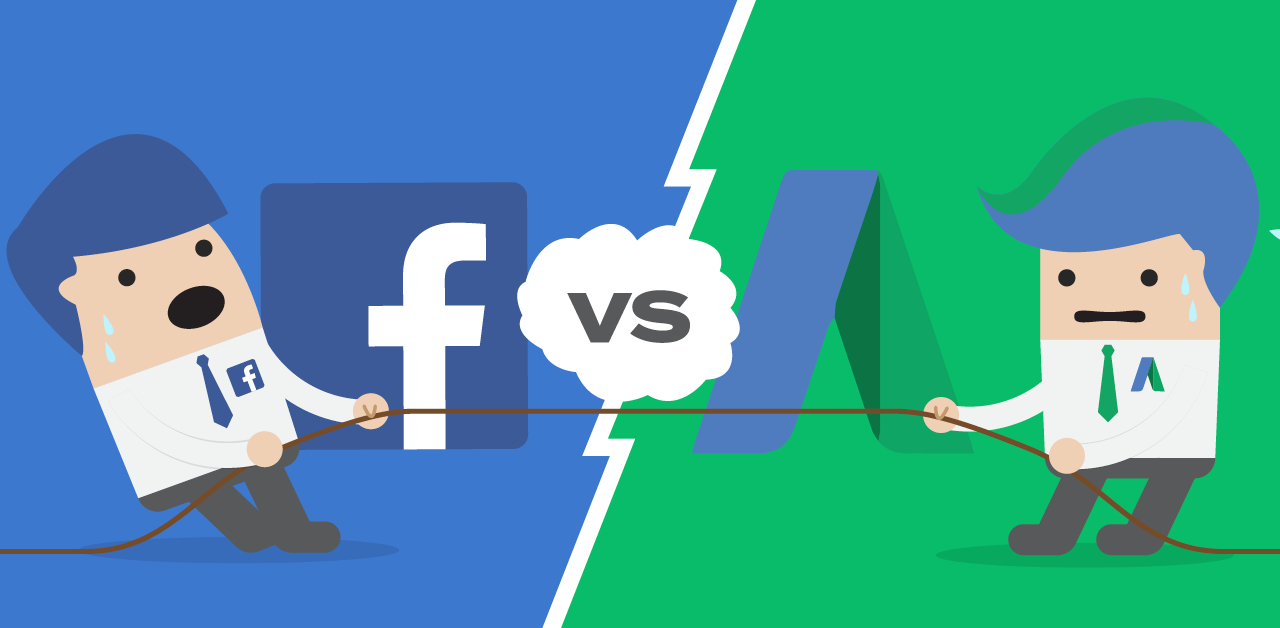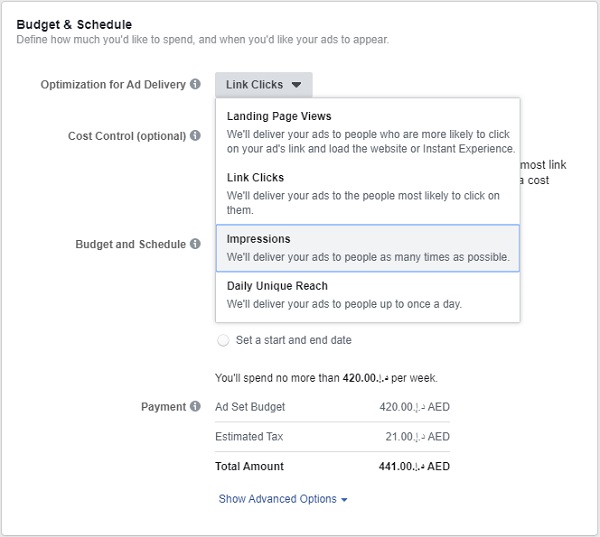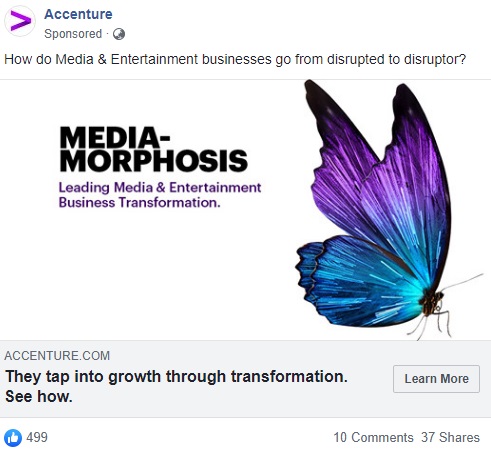Every business wants to reach its customers quickly and wants to convert leads into customers. Most of the businesses seem to struggle to get their voice heard. And the reason – they find it hard which platform to choose for quick optimization for their services. Should it be Facebook? Or, Google Ads is best for improving ROI?
It is a perturbing question for the majority of entrepreneurs, mid-size business owners and B2B companies to find out – Facebook Ads Vs Google Ads: Which will work best for you?

Simply put, both of these channels are befitting for businesses. Well, it is correct to say: Google Ads helps you find new customers. Facebook Ads help new customers find you.
Though, they are positioned ‘Competitors’ most of the time. But many businesses leverage from the strengths of both platforms Facebook and Google together to optimize visibility, enjoy increased sales, leads and quick outreach to new customers.
In practice, by adopting platform-specific strategies on Facebook and Google, online presence improves and return on advertising spend grows.
Here, you’ll find what set Facebook and Google apart across online advertising landscapes. We will examine key differences and how can we benefit from both advertising platforms for a wider digital marketing strategy.
Facebook Ads: Paid Social
Facebook Ad is a paid advertising system that lets businesses spread their branded messages across the world’s #1 social media network.
Placement of Facebook Ads includes Newsfeed on the homepage, Newsfeed on mobile, Right-hand side of homepage and log-out.
Apparently, Facebook Ads are similar to Google Ads as the intent of advertisers with both platforms is to promote their brands and businesses across the internet. In Facebook advertising, users find new businesses based on their online behavior. Whereas, Google Ads bridge gaps between businesses and customers.
Google Ads
Google Ads allows brands to spread their message across the Google search engine which has over 1 billion websites with 5.6 billion searches per day.
Google Ads is the world’s largest and widely used PPC advertising platform. Since it is the most sought-after solution that it has become synonymous with ‘Paid Search.’
The paid search focuses on targeted keywords and advertisements based-on text. For Google Ads, advertisers bid on keywords- specific words and phrases (Used by Google users in search queries) – with anticipation that their ads will be displayed next to search results for these queries.
Every time a user clicks on an ad, the advertiser is charged a certain amount of money. It’s the reason that it’s called ‘Pay-Per-Click’ (PPC).
The Key Strengths of Facebook Ads
With the years of improved advertising solutions, Facebook Ads today is a leading on line advertising platform for paid social and has become a fundamental part of numerous businesses’ internet marketing strategies.
Strong ROI (Return on Investment)
Facebook Ads often impresses brands and digital marketers because it shows good granularity for targeting the right kind of audience coupled with all the tools for creating engaging and lead-converting ads.
One of the many things that help Facebook Ads stand out is a potential ROI (Return on Investment). And, it is the key thing which encourages advertisers to make the most of the limited ad budget on the platform.

Though, budgeting for Facebook advertising campaigns vary and they mainly depend on a variety of factors i.e. scope, overall campaign objectives, etc. They are incredibly cost-effective with potential impact and ease up targeting the right audiences. That’s why; Facebook advertising is a good choice for businesses of all sizes and companies with limited resources.
An Innately Visual Platform
In contrast to Google advertising, Facebook Ads are innately visual. The best kind of Facebook ads is a mix of videos, color images, and other persuasive visual content in users’ News Feeds which enables advertisers to leverage strongly persuasive qualities of visual ads that convey a strong and compelling message across Facebook.

Just as Google is constantly experimenting with the formatting of its text-based PPC ads, Facebook constantly evaluates how can it offer advertisers a superior marketing platform and users a satisfying, rewarding online experience.
Alike Google, Facebook Ads are in constant evaluations to uncover how can it provide a superior marketing platform to advertisers and help users get a satisfactory and rewarding online presence.
Now, Facebook has different types of ad formats apart from image and video:
Slideshow
In Slideshow ads, you can combine multiple images and videos, text and sound for the brand’s storytelling. A brand has the liberty to use from 3 to 10 images or just a single video in a slideshow advertisement.
Carousel
If you want multiple images with headlines, and/or videos and CTA in one ad, then Carousel is a good choice because a Facebook user can scroll through carousel cards just by swiping on mobile phones or tablets or by clicking the arrows on a computer.
Instant Experience
Instant Experience is a mobile-friendly Facebook Ad format. It is a full-screen experience that opens when someone clicks on your ad. Brands that create Instant Experience enjoys top-notch visual attachment of clients to their products and services.
The Key Strengths of Google Ads
Google is the leading and most used search engine. It processes over 40,000 search queries every second on average that means over 3.5 billion searches per day and 1.2 trillion searches per year worldwide. In short, Google is the sweet spot for online advertisers to reach out to the big and potential audience of users actively looking for the best products and services.
Potential Audience Reach
One of the key strengths of Google Ads as an advertising platform is the potential audience reach. Since it is handling over 40,000 search queries every second which totals more than one trillion web searches in a single year. Google has become a highly sophisticated search engine- And, credit goes to RankBrain: proprietary AI and Machine Learning technology. This amazing search volume is likely to triple with viable opportunities for online advertising specialists to reach out to new customers.
- Google’s users are driven and type their searches with purpose.
- Facebook’s users are browsing because Facebook advertisement helps clients find new business, products, and services.
No other search engine can provide such potential and useful audiences that Google can for advertising of products and services. This big source of potential customers helps stand out in the competition and digital marketers can benefit from this platform to achieve their digital marketing goals. From doubtless accuracy of search results and the presence of billions of users, it’s easy to say – Google Ads is the most popular PPC platform in the world right now.
Google Ads is Best for Generating Leads
Do you want to drive sales and generate leads? Every business wants, but lead generation comes with its own challenges. Because reaching out to new customers is important for any size of the company, but you want to reach qualified leads only resembling your target audience as they will help you increase your ROI.
An important fact is acquiring new leads is expensive. Here, research comes to help us with the fact: acquiring new customers is 7 times more expensive than to retain an old one.
If you don’t want your advertising spend increase in gaining new leads, then try your hands around Google Ads: It is the right solution for your business.
Simply put, Google Ads lets you reach customers with rightly-targeted keywords. For lead generation to work specifically in your favor, you just need to work on keyword research and you’ll see your online advertising results going through the roof.
Conclusion: What Will Work Best for You?
Google Ads and Facebook ads both are incalculably powerful and successful advertising platforms to fulfill every type of business need.
When assessing each advertising solution’s strength, it will be good to view both of them complementary to each other than adversarial.
Well, the way in which both of these advertising platforms (Google Ads and Facebook Ads) have improved recently, it shows that they should be used in collaboration instead of opposition. If you want to make your advertising strategy successful and viable, harness the power of both Paid Search (Google Advertising) and Paid Social (Facebook Advertising).
This way your marketing message will remain constant across both paid internet marketing platforms. In the end, it depends upon you to best understand each platform to maximize your ROI and benefit from business growth.
This article is written by John Lawson, Head of operations at Golpik Inc. It’s a technology company that excels in web development, app development, eCommerce development and much more. They work on various platforms like Drupal, Shopify, WordPress, etc.
He manages overall marketing activities for the company. He writes creative content that engages audiences with a wonderful experience. His articles provide valuable information to readers that groom them in all aspects.
Leave a Reply